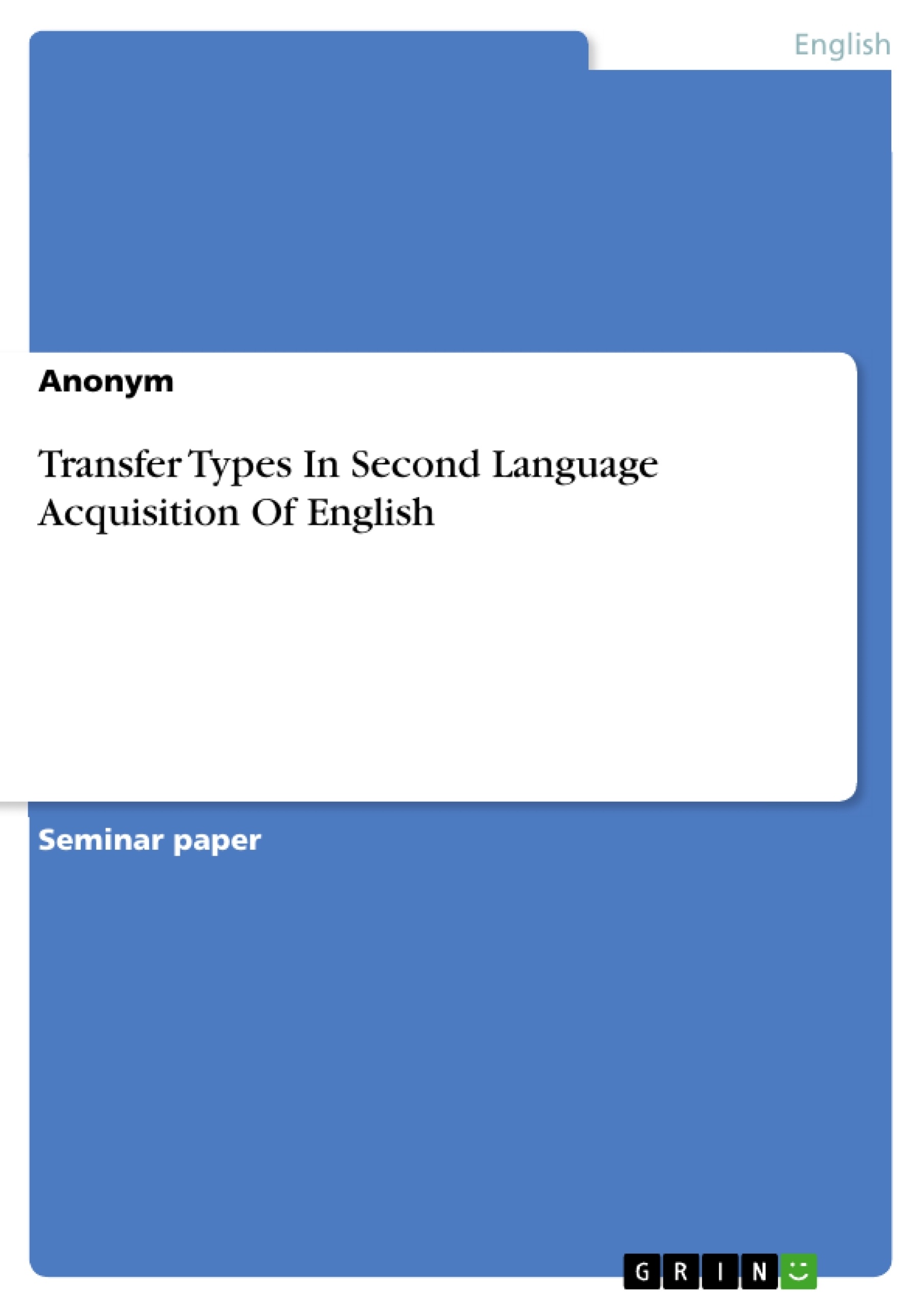Generally, the idea is that languages of distant origins, such as English and many Asian languages, do not share many features and structures as they did not develop from the same roots. The present paper aims to analyze the transfer that occurs especially in those language combinations. Three studies are examined regarding the L1s of the subjects and the transfer types that can be observed. The main research question is the following: What types of transfer can be observed with English as a second language (ESL) learners whose L1s are not closely related to English as the target language?
Table of Contents
- 1 Introduction
- 2 Theoretical Background
- 2.1 Transfer
- 2.2 Negative and positive transfer, avoidance and over-use
- 3 Investigated Languages
- 4 Transfer Types in the Studies
- 5 Discussion
- 6 Conclusion
Objectives and Key Themes
This paper examines the transfer of linguistic knowledge from the first language (L1) to the second language (L2) in the context of English as a Second Language (ESL) acquisition. The primary focus is on learners whose L1s are not closely related to English, particularly Asian languages. The study aims to investigate the types of transfer that occur in such language combinations, addressing whether the distance between the L1 and L2 primarily leads to negative transfer (interference) or if positive transfer (facilitation) can also be observed. Furthermore, the paper explores whether Spanish-speaking ESL learners, whose L1 is more closely related to English, exhibit more positive transfer or still experience negative transfer.
- Transfer of linguistic knowledge from L1 to L2 in ESL acquisition
- Types of transfer in language combinations with distant origins (e.g., Asian languages and English)
- The occurrence of both negative and positive transfer in distant language combinations
- Comparative analysis of transfer patterns between learners with Asian L1s and Spanish-speaking ESL learners
- Investigation of factors influencing the prevalence of negative and positive transfer
Chapter Summaries
- Introduction: This chapter introduces the concept of language transfer as a core area of research in second language acquisition (SLA), highlighting the influence of the L1 on L2 learning. It establishes the research question: What types of transfer can be observed in ESL learners whose L1s are not closely related to English?
- Theoretical Background: This chapter provides a comprehensive overview of language transfer, tracing its origins in behaviorist psychology and outlining the evolution of its definition and scope. It presents Odlin's widely accepted definition of transfer as the influence of similarities and differences between the target language and previously acquired languages. The chapter further explores the concepts of positive and negative transfer, avoidance, and over-use, emphasizing the focus on negative and positive transfer in the present paper.
- Investigated Languages: This chapter details the specific languages under investigation in the individual studies analyzed in the paper. It provides information about the L1s of the participants, specifically focusing on languages from the Asian language region and Spanish, allowing for a comparative analysis of transfer patterns.
- Transfer Types in the Studies: This chapter presents the findings of the individual studies, examining the types of transfer observed in the participants' language production. It analyzes specific instances of both negative and positive transfer, highlighting the impact of the L1 on the acquisition of English grammatical structures.
Keywords
This paper focuses on key concepts such as language transfer, second language acquisition (SLA), negative and positive transfer, avoidance, over-use, L1 influence, crosslinguistic influence, ESL learners, Asian languages, Spanish, and grammatical structures.
- Quote paper
- Anonym (Author), 2020, Transfer Types In Second Language Acquisition Of English, Munich, GRIN Verlag, https://www.grin.com/document/981261




